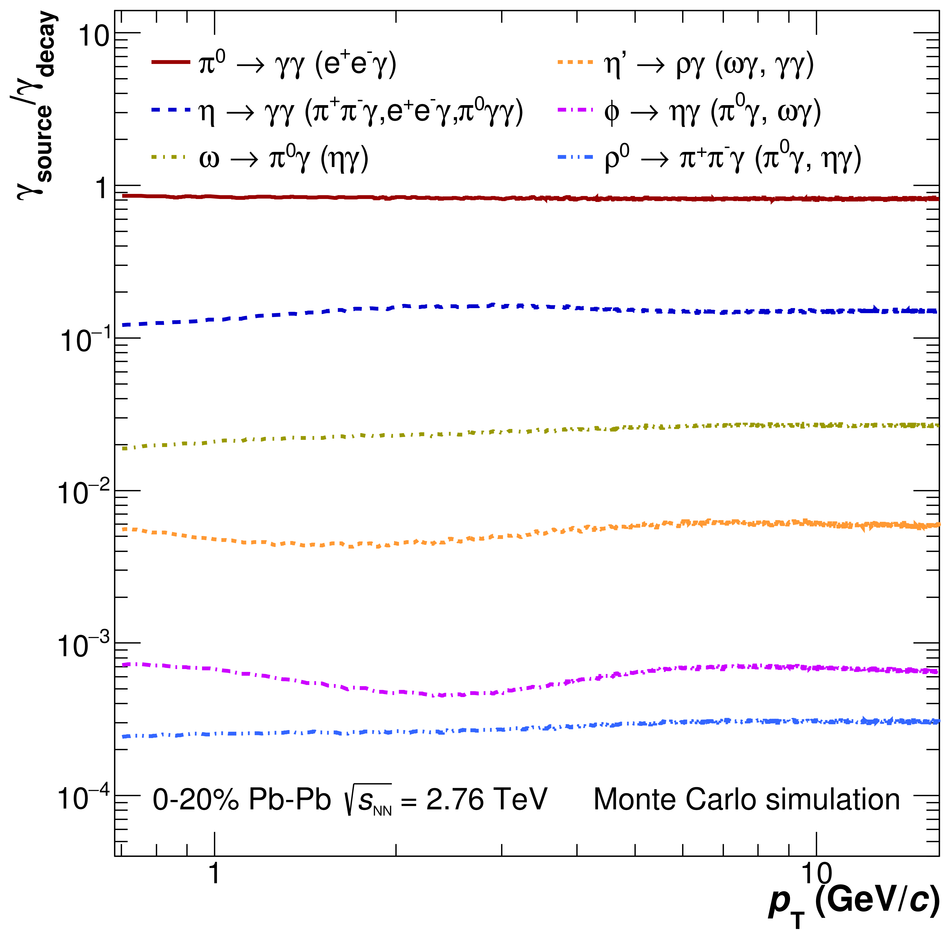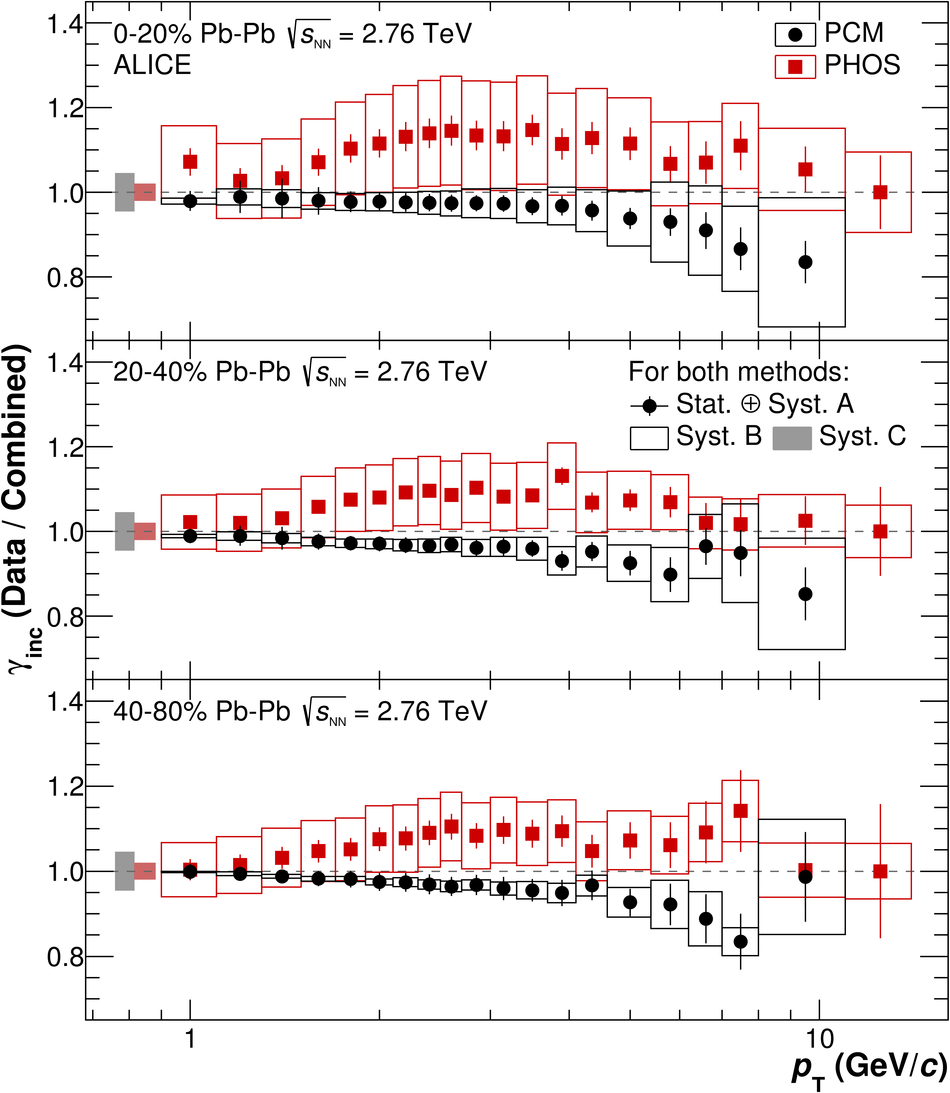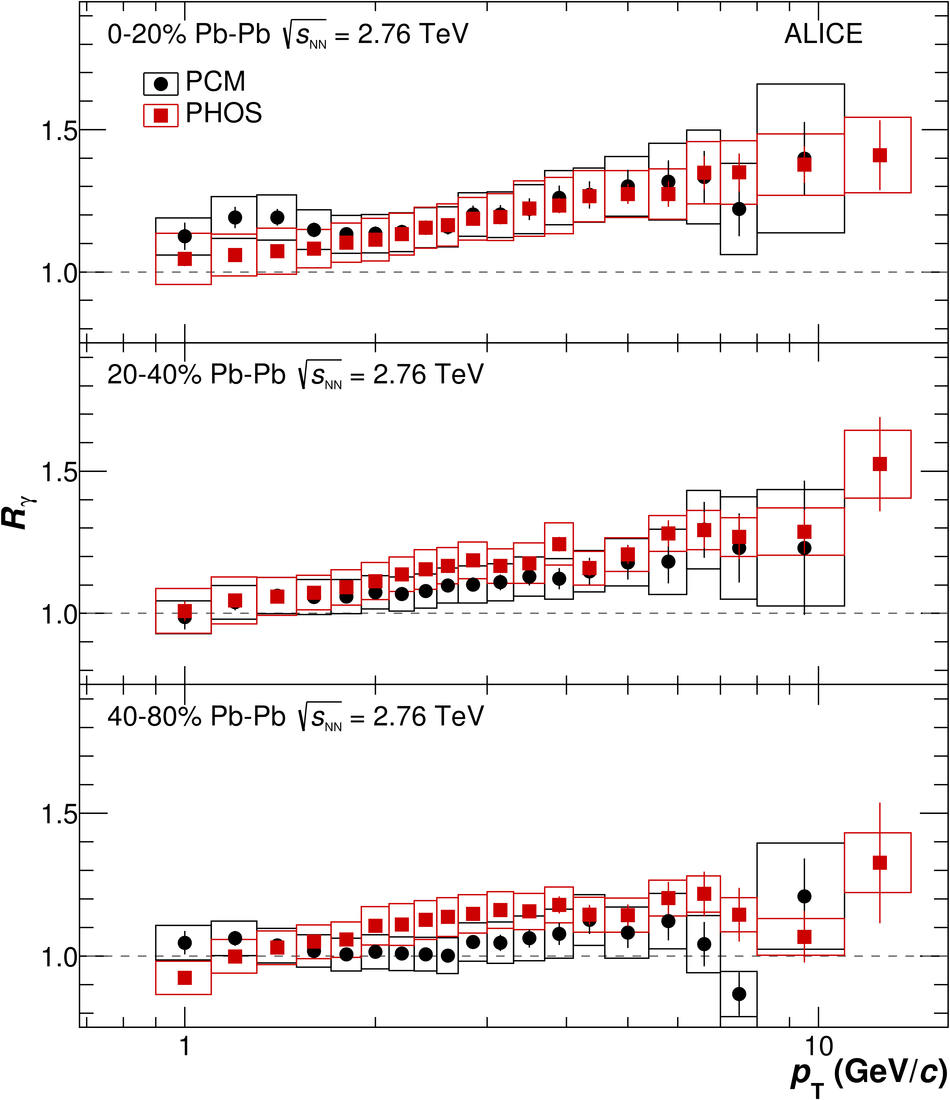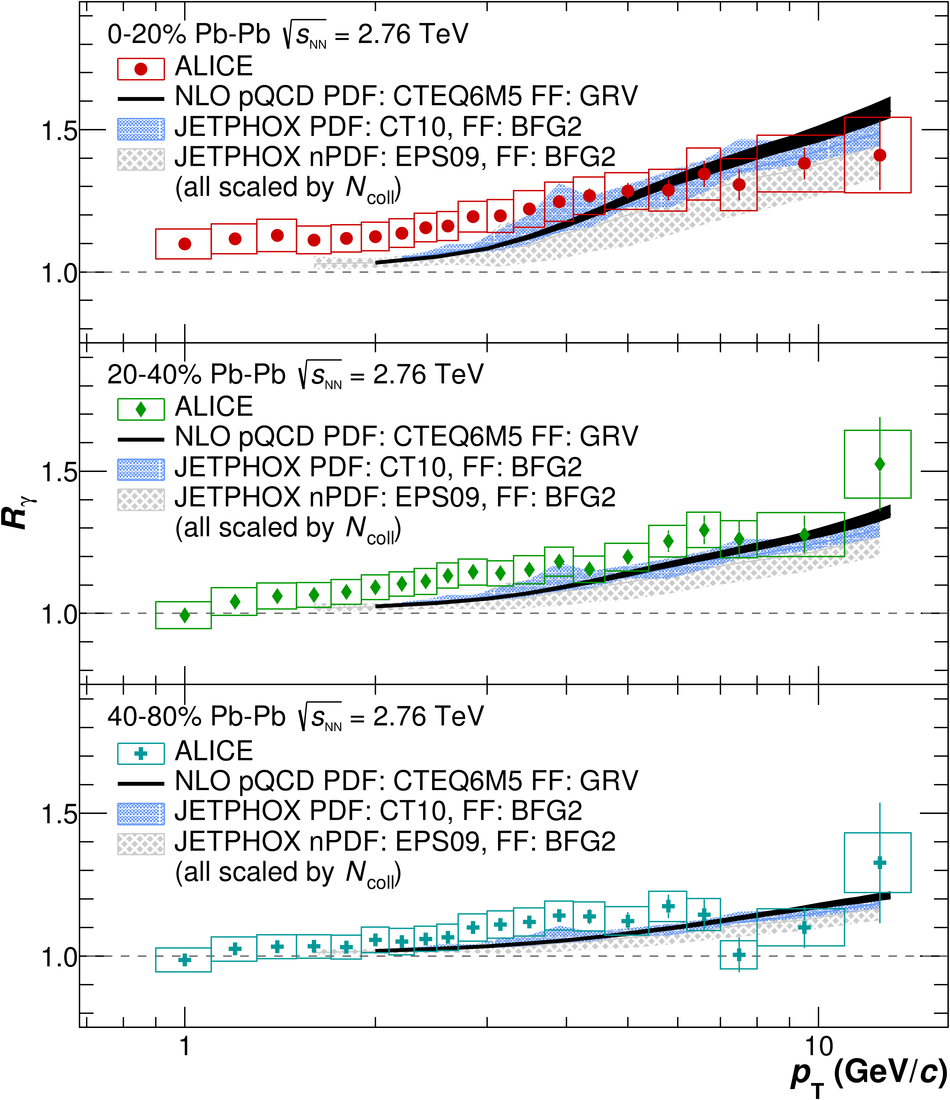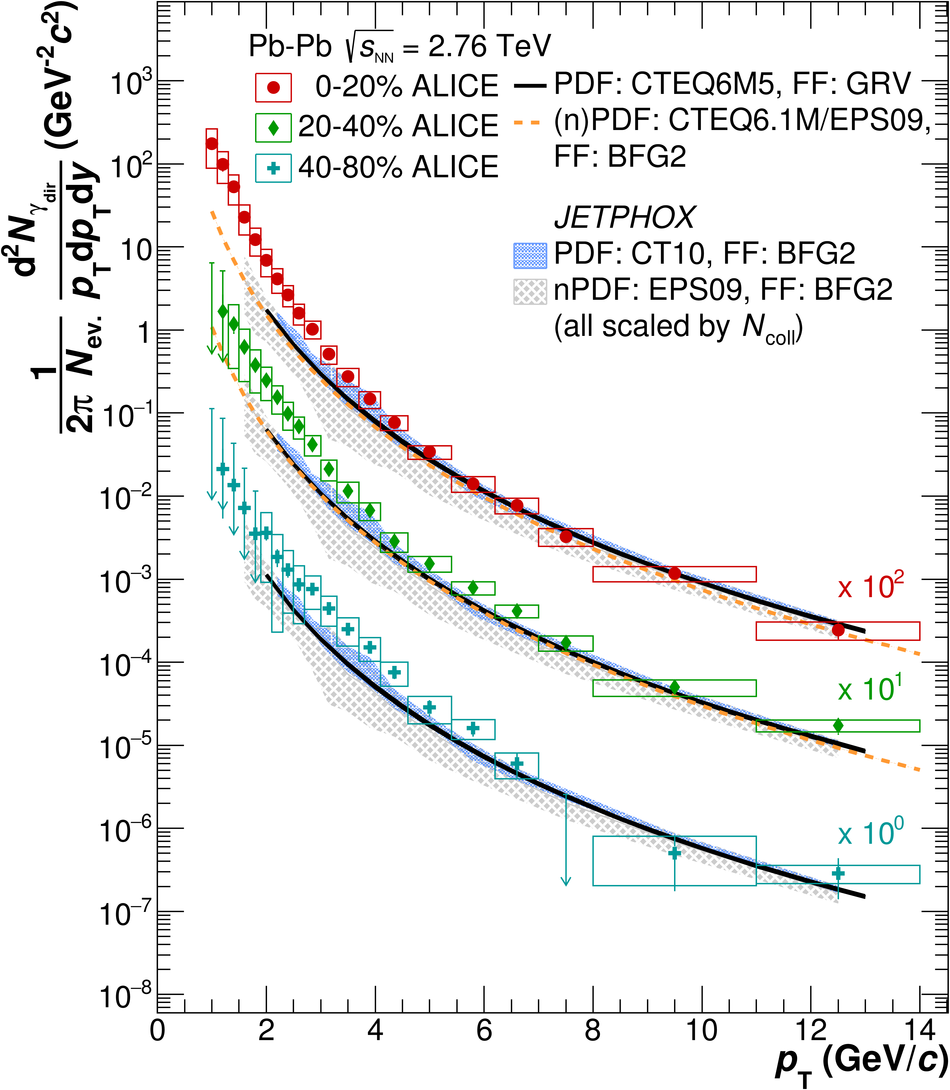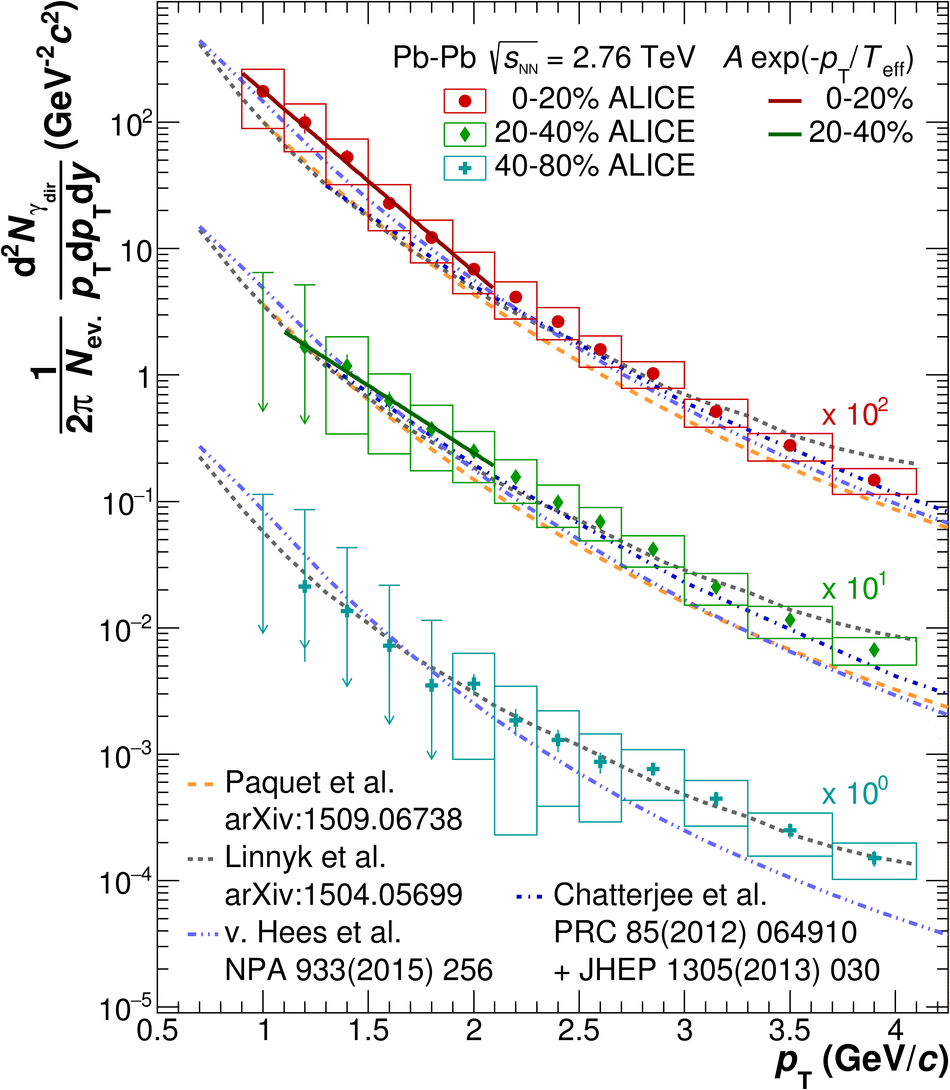Direct photon production at mid-rapidity in Pb-Pb collisions at $\sqrt{s_{_{\mathrm{NN}}}} = 2.76$ TeV was studied in the transverse momentum range $0.9 <~ p_\mathrm{T} <~ 14$ GeV$/c$. Photons were detected with the highly segmented electromagnetic calorimeter PHOS and via conversions in the ALICE detector material with the $e^+e^-$ pair reconstructed in the central tracking system. The results of the two methods were combined and direct photon spectra were measured for the 0-20%, 20-40%, and 40-80% centrality classes. For all three classes, agreement was found with perturbative QCD calculations for $p_\mathrm{T} \gtrsim 5$ GeV$/c$. Direct photon spectra down to $p_\mathrm{T} \approx 1$ GeV$/c$ could be extracted for the 20-40% and 0-20% centrality classes. The significance of the direct photon signal for $0.9 <~ p_\mathrm{T} <~ 2.1$ GeV$/c$ is $2.6\sigma$ for the 0-20% class. The spectrum in this $p_\mathrm{T}$ range and centrality class can be described by an exponential with an inverse slope parameter of $(297 \pm 12^\mathrm{stat}\pm 41^\mathrm{syst})$ MeV. State-of-the-art models for photon production in heavy-ion collisions agree with the data within uncertainties.
Phys. Lett. B 754 (2016) 235-248
HEP Data
e-Print: arXiv:1509.07324 | PDF | inSPIRE
CERN-PH-EP-2015-254

